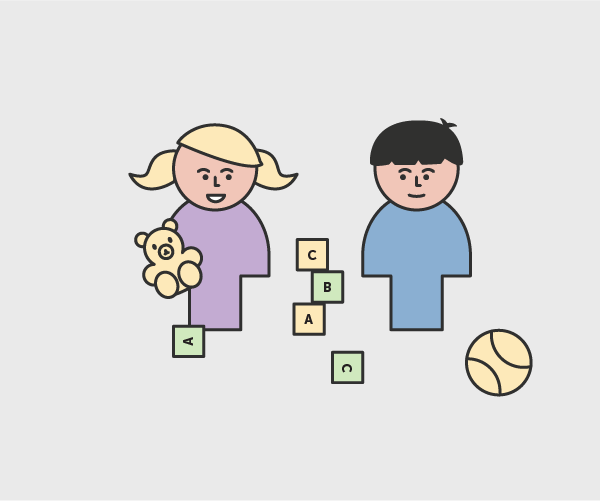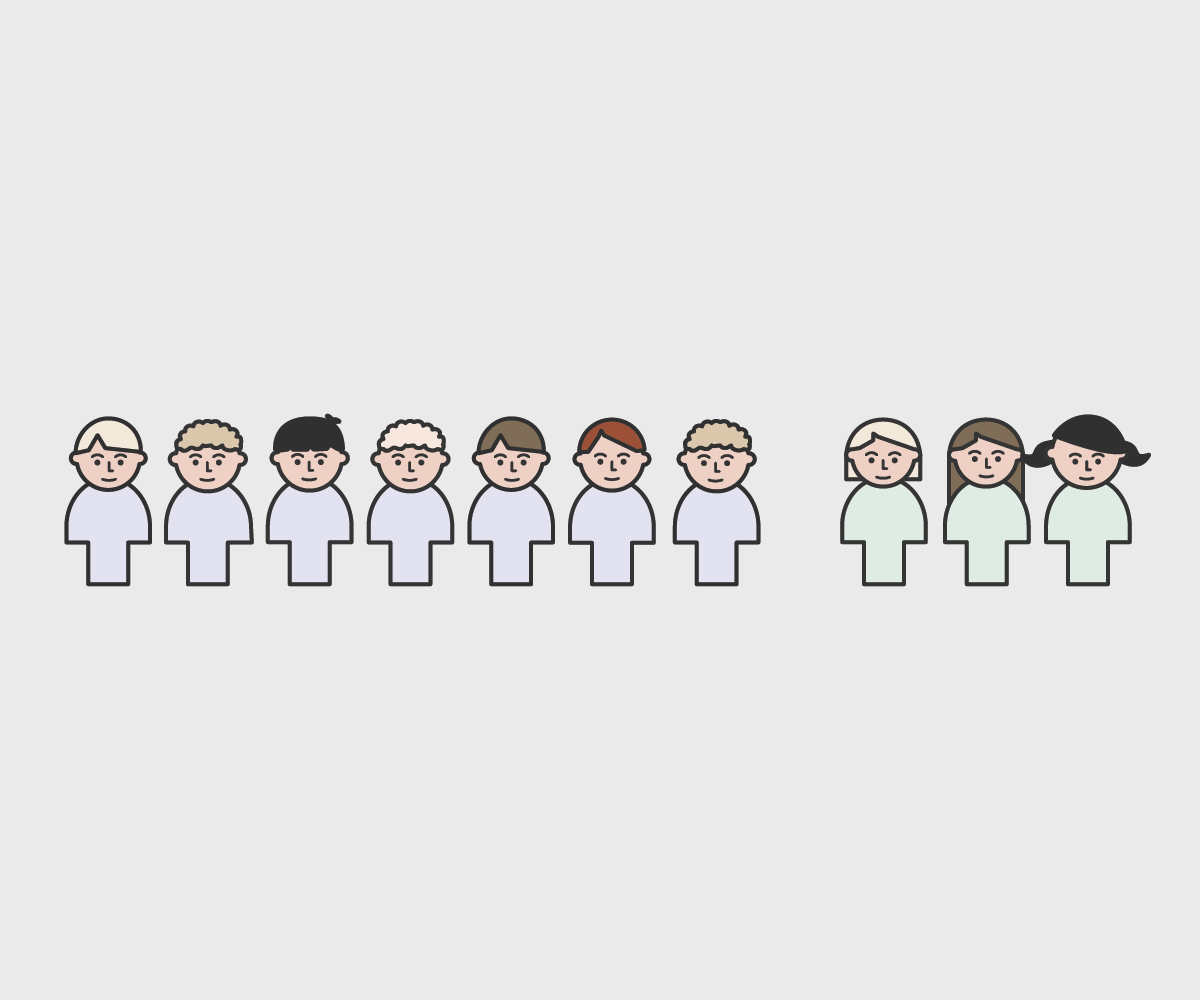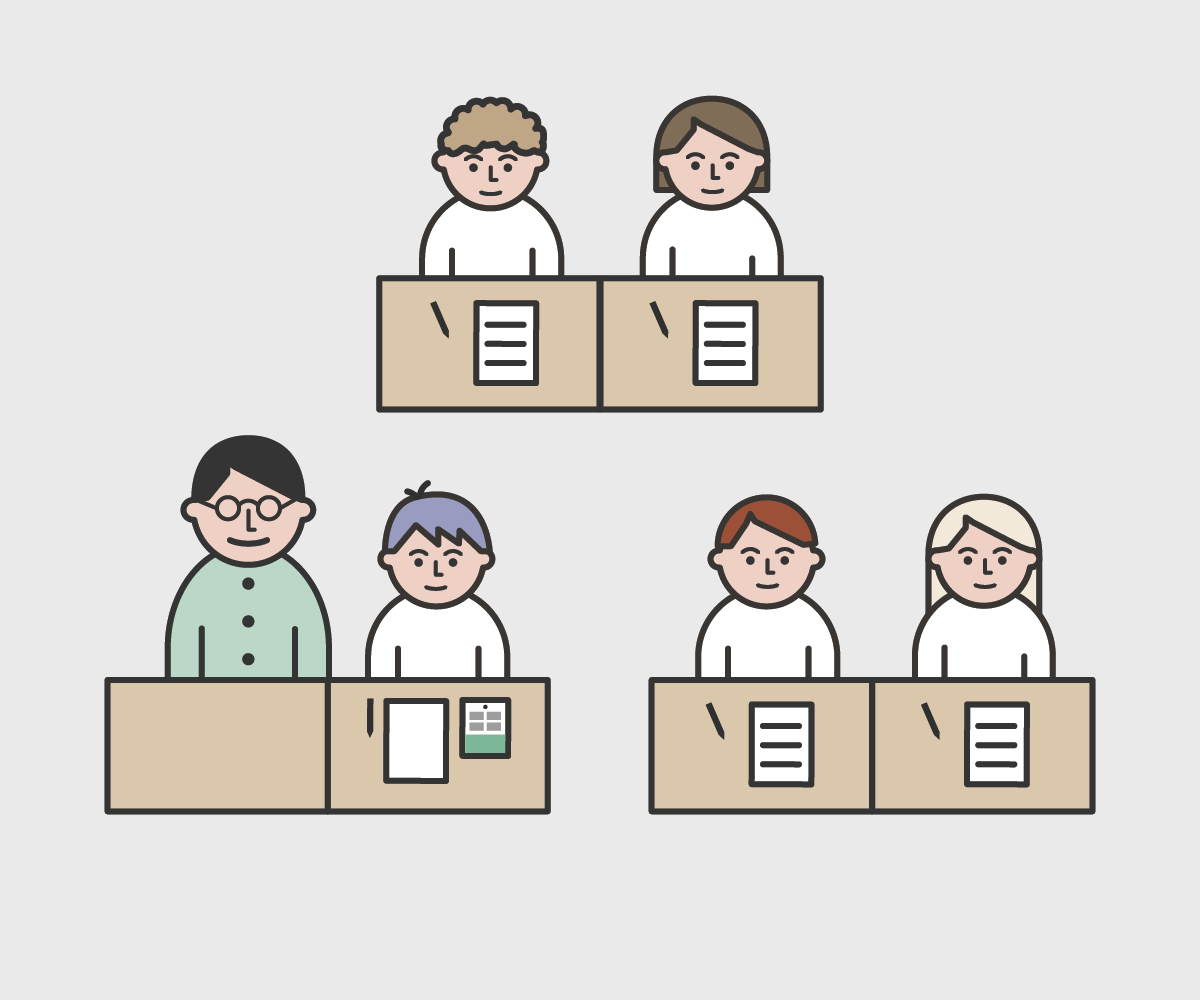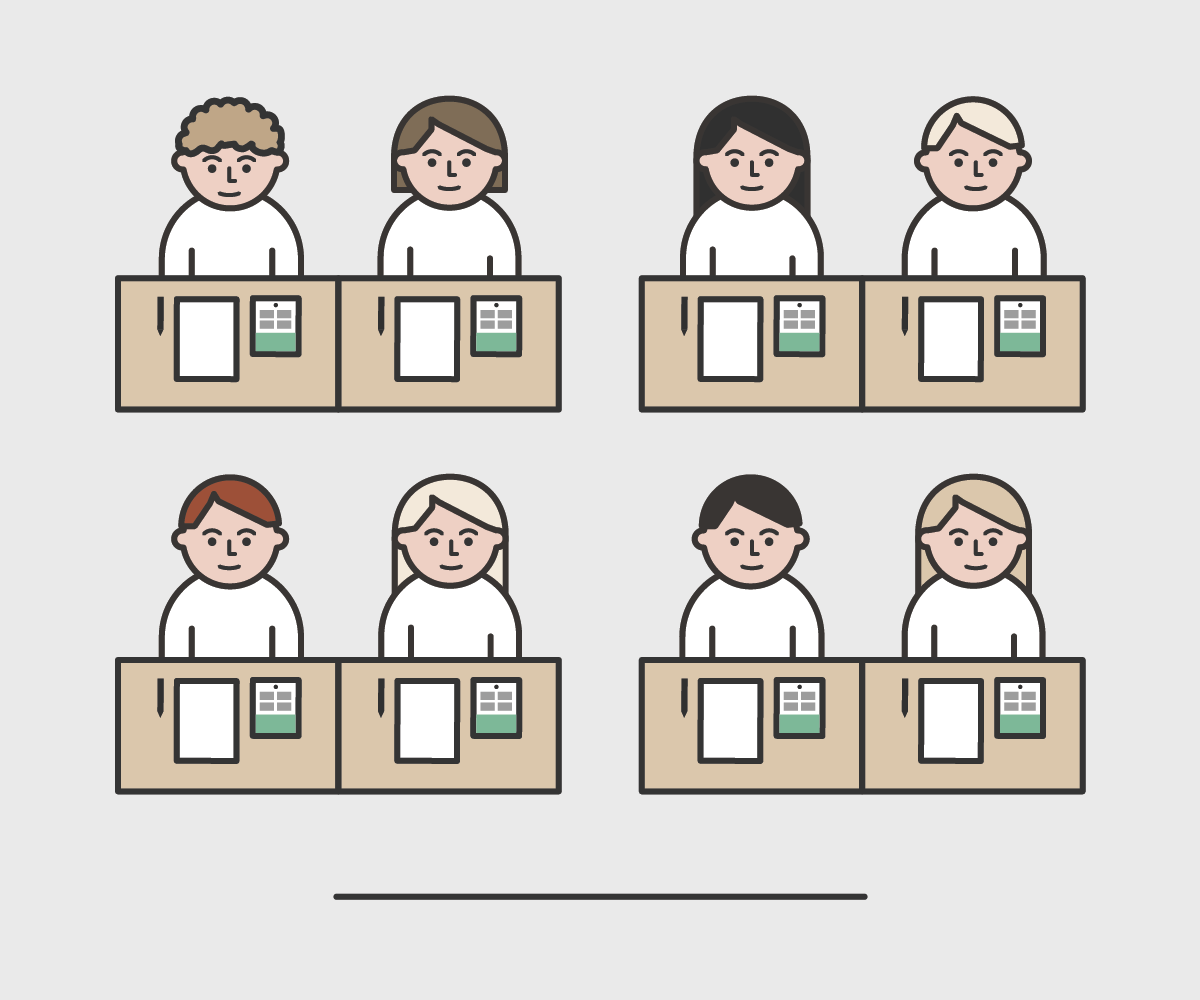The Norwegian Education Mirror, 2019
Special educational support and special needs education
The quality of the mainstream provision can be crucial to the practice and effects of special educational support and special needs education in kindergartens and schools. The methods used in special needs education are often transferable, and what is good for children with special needs is often good for all children. High quality mainstream provision can mean that fewer children require special educational support.
Inclusive kindergartens and schools have flexible solutions in place and allocate sufficient resources to be able to adapt the provision to accommodate everyone at an early stage (Ministry of Education and Research, 2019). Early intervention has been a key focus area in compulsory education in recent years. White Paper 6 reinforces the responsibility placed on kindergartens and schools for early intervention, inclusion and good, adapted teaching provision. Early intervention refers both to action being taken at an early stage of a child’s life and to intervention as soon as problems arise or are identified (Ministry of Education and Research, 2019).
Special educational support in kindergarten
8,800 children received special educational support in kindergarten in 2018. This is 3.2 per cent of the children. There has been a slight yet steady increase in the proportion of children receiving special educational support in kindergarten over the past five years.
The purpose of special educational support is to give children early help and support in developing and learning language and social skills, for example. Special educational support can be given to a child individually or in a group. The help must include an offer of parental advice.
| Indicator | 2014 | 2015 | 2016 | 2017 | 2018 |
|---|---|---|---|---|---|
| Number of children with a statement of special educational needs | 7799 | 7950 | 8290 | 8674 | 8813 |
| Proportion of all kindergarten children | 2,7% | 2,8 % | 2,9 % | 3,1 % | 3,2 % |
| Source: Norwegian Directorate for Education and Training / BASIL | |||||
A disproportionate number of boys are receiving special educational support
71 per cent of the children who receive special educational support in kindergarten are boys. The imbalance is greater in the 3–5 age bracket than amongst the youngest children. 68 per cent of pupils with a special educational needs statement in compulsory education are boys.
The proportion of children receiving special educational support in kindergarten increases from 0.4 per cent of all 0 and 1-year-olds to 6.1 per cent of all 5-year-olds. One reason for this might be that it takes time before a child’s challenges are identified and the support is provided to prepare the child for starting school (Wendelborg et al., 2015).
In Year 1 of primary school the proportion of children who receive special educational support drops to 3.7 per cent. The percentage of pupils receiving special educational support in school also increases year by year.
There are more statemented children in municipal kindergartens than in private kindergartens. In municipal kindergartens the figure is 3.7 per cent, while in private kindergartens it is 2.7 per cent. One reason for this may be that the local authority is better able to focus its special educational support provision around selected kindergartens. A total of 51 kindergartens say they have been specially adapted to accommodate children with special needs. All bar one of them are municipal kindergartens.

71 per cent of children who receive special educational support are boys. Most of them are in the 3–5 age group.
Few children defer school entry
A total of 393 six-year-olds are enrolled in kindergarten. This is equivalent to just 0.6 per cent of the cohort. These are children whose entry to school has been deferred. 76 per cent of all 6-year-olds in kindergarten receive special educational support. Deferred school entry is less common in Norway than in other countries. Parents must contact the local authority to request deferred entry. The local authority will make a decision after obtaining expert advice from the educational psychology service (The Norwegian Directorate for Education and Training 2017c). In comparison, between 10 and 15 per cent of 6-year-olds in Denmark have their entry to school deferred. Amongst boys born in December the figure is 56 per cent (NOU 2019:3).
Special needs provision in compulsory education
Pupils who do not benefit sufficiently from mainstream provision are entitled to special needs support. It has been a political goal for some time to improve adapted tuition in order to enhance learning outcomes in mainstream education and to make fewer pupils dependent on special needs support.
The proportion of pupils receiving special needs support is stable at 8 per cent
7.7 per cent of pupils in primary and lower secondary received special needs support in autumn 2019, equivalent to 49,800 pupils. Having risen over a number of years, the figure fell slightly in 2012 and has since remained stable at just under 8 per cent.
A total 11 per cent of boys and 5 per cent of girls receive special needs support. This means that 68 per cent of pupils who receive special needs support are boys. This figure has remained fairly stable over time. The proportion of boys receiving special needs support is somewhat lower in compulsory education than in kindergarten.
In Sweden the proportion of children receiving additional support is 5.6 per cent, slightly lower than in Norway. Yet the curve largely follows the same pattern as in Norway, with a relatively small percentage of pupils receiving additional support in Year 1 of school and then an increase over time.
The proportion of children receiving special needs support varies between 0 and 22 per cent from municipality to municipality. The greatest variations can be seen in the smallest municipalities in particular.
The extent of special needs provision also varies according to school size. At schools with 500 or more pupils the proportion of pupils receiving special needs support is on average 7 per cent, while at schools with fewer than 100 pupils it is 12 per cent.
Almost three times as many pupils receive special needs support in Year 10 as in Year 1
The percentage of pupils receiving special needs support increases as the pupils get older. 3.7 per cent of Year 1 pupils receive special needs support, while the figure for Year 10 is 10.6 per cent – almost three times higher. On reason for this is that the academic demands become more rigorous year by year (Wendelborg, 2010). Any special needs may also become easier to spot as the children get older. The trend is broken in the transition between lower and upper secondary.

7 in 10 pupils who receive special needs support are boys.
More special needs pupils in private schools
Private schools have a higher percentage of special needs pupils than public schools. In private schools the figure is 10.4 per cent compared with 7.7 per cent in public schools. The figure is broadly the same in Years 1 and 2, but from Year 3 onwards the percentage of pupils receiving special needs support increases more in private schools than in public schools. This trend is opposite of that seen in kindergartens, where there are more children receiving special educational support in municipal kindergartens than in private kindergartens.
There is little research to explain the higher prevalence of special needs provision in private primary and lower secondary schools compared with public schools. One reason could be that parents of children with particular needs or children with a statement of special needs are more likely to apply to schools that offer alternative teaching methods.
Steiner, Montessori and Christian schools stand out amongst the schools with a high proportion of special needs pupils.
Almost half of statements are for more than 271 hours a year
The statement of special needs should stipulate how many hours of special needs support the pupil should receive every year. Some pupils are given a few hours in certain subjects, while others receive special needs support in all subjects. Half of the pupils are allocated 271 hours or more during the academic year.
The total number of hours for a Year 1 pupil is around 700 hours a year, while a pupil in Year 10 receives just under 900 hours a year.
Significant variations in the amount of special needs provision given
The extent of special needs provision varies from municipality to municipality. In the ten biggest municipalities the proportion of statemented pupils receiving more than 271 hours ranges from 30 to 69 per cent. These disparities are an indication that special needs provision is interpreted and applied in different ways by local authorities.
At small schools with fewer than 100 pupils 64 per cent of statemented pupils receive more than 271 hours.
More pupils are receiving special needs support in their ordinary class
There has been a steady increase in the proportion of pupils receiving special needs support within their ordinary class in recent years. 43 per cent of pupils who receive special needs support receive it in their ordinary class. In 2013 the figure was 28 per cent. 44 per cent receive it primarily in groups, while 13 receive it mostly alone. 43 per cent of statemented pupils receive special needs support in class.
The resources available determine how the special needs provision is organised. In larger schools it is more common to provide special needs support in groups, which can be an appropriate solution when there are several statemented pupils in the same school. Group tuition is less common in smaller schools.
More than 4,300 pupils attend dedicated special needs schools or schools with a permanent unit for special needs education. There are 58 dedicated special needs schools and 298 schools with permanent units for special needs education. Special needs units are more common in lower secondary schools than in primary schools. In Oslo 22 per cent of statemented pupils either attend dedicated special need schools or permanent special needs units. By comparison, 8 per cent of statemented pupils nationwide do so. Most of the biggest municipalities in Norway run multiple special needs schools and permanent special needs units.
A further 1,800 pupils with statements of special needs are on placements in alternative learning environments one or more days a week with activities including outdoor pursuits, farm work or car mechanics, for example.

43 per cent of statemented pupils receive special needs support in class.
The quality of the teaching impacts the need for special needs provision
There is reason to believe that the quality of the mainstream provision has a significant impact on the need for and value of special needs provision for many pupils.
The better the mainstream provision, the less of a need for extraordinary arrangements. When the mainstream provision is good it also has a positive effect on the special needs provision (Haug, 2017).
Teachers want to learn more about pupils with special educational needs
The principle of adapted tuition poses a challenge to learning environments, methodologies and pedagogy in schools. It requires schools to give active consideration to variations between the pupils. One key political goal is that special needs education should mainly be provided by teachers or SEN specialists. In the TALIS 2018 survey one in six teachers reported a “high level of need” for professional development in relation to teaching children with special educational needs. This is highlighted further in that one in five headteachers considers the shortage of teachers with these skills to be a factor that prevents the school from providing quality instruction “a lot”.
A report by the Ombudsman for Children, the Nordahl Commission and the subsequent consultation all showed that many people agree that provision for children and pupils with special needs is often inadequate. Not all children and pupils receive the help they need. Many get help too late and are met with low expectations (Ministry of Education and Research, 2019).
A study has found that in fewer than half of cases where pupils receive special needs support it was provided by a SEN specialist. The study also revealed how the proportion of SEN specialists fell at the lower secondary stage despite an increase in special needs provision year on year (Haug, 2017).

One in six teachers say they need to improve their skills in teaching children with special educational needs.
Special needs provision in upper secondary education and training
The percentage of students receiving special needs support drops in the transition between lower and upper secondary. There is a variety of reasons for this. A recently published evaluation of special needs provision in upper secondary education and training shows that structures, organisation and other content in upper secondary education and training can help explain why fewer students receive special needs support in upper secondary (Markussen et al., 2019).
Fewer students receive special needs support in upper secondary
The percentage of students receiving special needs support drops in the transition between lower and upper secondary. A NIFU report has found that 4 per cent of students in upper secondary education or training were given special needs provision in the 2018-19 academic year (Markussen et al., 2019). This is considerably fewer than in Year 10, where the figure is 10.6 per cent.
There is a variety of reasons for this. A recently published evaluation of special needs provision in upper secondary education and training shows that structures, organisation and other content in upper secondary education and training can help explain why fewer students receive special needs support in upper secondary (Markussen et al., 2019).
The study states that the limited extent of special needs provision could be linked to the fact that the students themselves choose their programme of study and that they are able to specialise in subjects that interest, motivate and engage them. Some students no longer wish to receive special needs provision and turn it down. Another reason may be that smaller class sizes on vocational programmes make it easier to accommodate them (Markussen et al., 2019).
Special needs support in upper secondary is provided either in dedicated classes with few students or fully or partially within mainstream classes. Around 66 per cent of pupils who receive special needs support attend dedicated classes with few students, while 34 per cent attend mainstream classes and receive all or part of their special needs support there. Most students attending the small classes attend classes with 3–6 students. These classes often provide life skills training or training for work. Students receiving special needs support in mainstream classes primarily do so in the common core subjects, especially Norwegian and mathematics.
Some students who receive special needs support are not affiliated to a particular year group (Markussen et al., 2019). They may be students undergoing life skills training or training for work (see fact box on completion rates) in small groups or another form of training that does not follow the usual progression from one year to the next. Students who pursue non-affiliated courses on general study programmes make up 32 per cent of all students receiving special needs support (471 in 1,406 students). On vocational study programmes the figure is 28 per cent (1,184 in 4,156).
Considerable variations between counties and schools
There are relatively significant differences from county to county in terms of the proportion of students receiving special needs support (Markussen et al., 2019). 5.9 per cent of students in Østfold county receive special needs support. This is almost twice as many as in Rogaland county, where the figure is 2.7 per cent. The likelihood of students receiving special needs support in mainstream classes is also far higher in certain counties than others. The proportion of students receiving special needs support in dedicated classes with few students ranges from 32 per cent in Sogn og Fjordane county to 93 per cent in Vestfold county.
There is a tendency towards increased concentrations of special needs students at certain schools and in dedicated classes with few students. The study identified upper secondary schools where more than 20 per cent of the students received special needs support, while other schools had no special needs students. Students who receive special needs support in mainstream classes are often students who receive special needs support in a few subjects only and who attend schools where few students receive special needs support.

66 per cent of students who receive special needs support in upper secondary attend dedicated classes with few students.